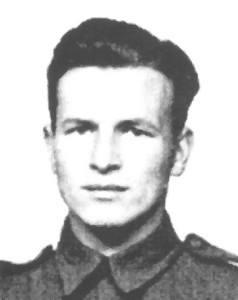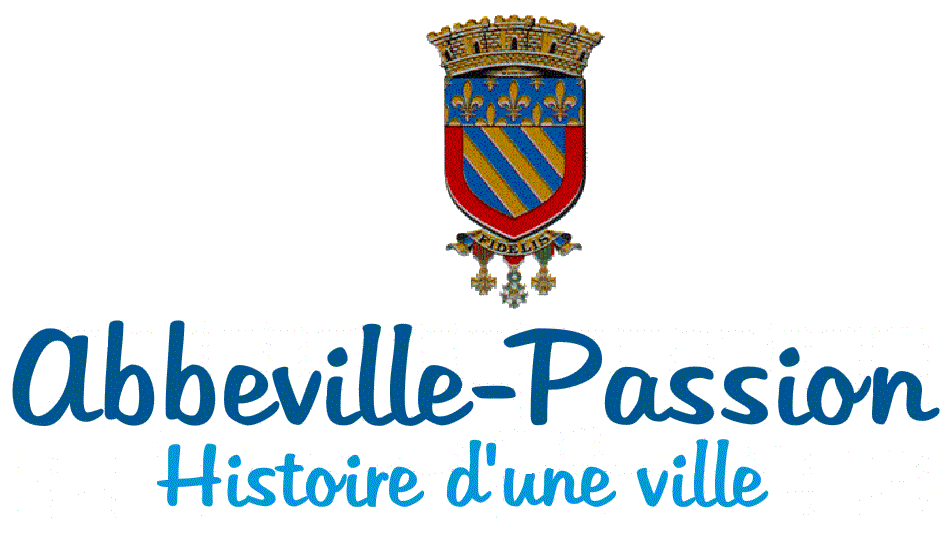-

 Monuments
Monuments- • L'hôtel de l'Alhambra
- • Monument La Barre
- • The "Baths and Shower"
- • The Bourdois or Small Echevinage
- • The Carmel
- • The Charterhouse of Thuyson
- • The Municipal Theatre
- • The bridge of the Six Moulins
- • The château de Bagatelle
- • The manufactures des Rames
- • The naked woman
- • The so-called new house "Van Robais"
- • The train station
- • The Battle Abbeville
- • The liberation of Abbeville
-

 Personalities inhabitant of Abbeville
Personalities inhabitant of Abbeville- • Albert Laurent, Musician and literary
- • André Maurois
- • Ernest Prarond
- • Father Pierre Carpentier
- • François-Jean Lefebvre, Chevalier de La Barre
- • Henri Caron, painter of the Bay of Somme
- • Jacques Boucher de Crèvecoeur de Perthes
- • Jean-François Lesueur
- • Max Lejeune and the reconstruction of Abbeville
- • Pierre François Guerlain
- • Roger Agache
- • Rose Bertin
- • The Admiral Courbet
- • Van Robais
-

 Sports
Sports- • SCA
1152771 visitors
18 visitors online
At the dawn of June 6, 1944, the Allied troops landed in Normandy, the longest day then began and paved the way for the liberation of France. From Normandy to Abbeville, three long months pass. Three long months of sadness, revolt and hope.
The mission to liberate this part of the North of France is entrusted after much procrastination to the 2nd Canadian Corps. This body includes:
- 2nd Canadian Division
- The 3rd Canadian Division
- The 4th Canadian Armored Division
- The 1st Polish Armored Division
On September 1st, the 4th Canadian Armored Division advanced towards the Somme via Aumale and Hornoy. As for the 1st Polish Armored Division (DBP), it has the order to exceed the 3rd Canadian Division and continue the breakthrough to Abbeville by axis Neufchâtel-Blangy.
So on September 1st, the elements of the 1st DBP forced the passage over the Bresle, liberate Blangy and advance on Saint-Maxent where they meet with German fire.
At Huppy, the division wipes a barrage from the north bank of the Somme. The progression continues towards Behen where a barrage of guns is detected. These having proved dummy, the progression continues towards the Croisettes where, again, the soldiers meet another barrage of guns, unfortunately very real this time. Some losses are to be deplored.
At dawn on September 2, 1944, the scouts of the division reached the Somme hoping to find intact bridges. They arrive at Rouvroy, face new German fire, advance, try to circumvent the obstacle of the rubble of the destroyed railway bridge and then hear a huge explosion: the bridge they hoped to cross has just shattered.
The hunters reached the other shore with the help of an abandoned boat, according to some, lent by the resistance fighters who had concealed it to the others, while the tanks leave Cahon-Gouy looking for a passage. Unfortunately, the only bridge in sight jumps before their eyes, just arrived.
The hunters, wedged between river and canal, wipe the fire of the snipers from the towers of Saint-Vulfran. The tanks left towards Gouy descend the south bank under the German fire. The tank regiment must therefore change its strategy to counterbalance the German defense. The artillery duel is held all day long.
On the night of 2 to 3 September, the 8th and 9th Polish fighter battalions (belonging to the 3rd Infantry Brigade, one of the corps of the 1st Polish Armored Division) managed to cross the Somme Canal at Port-Le- great.
It was only at dawn on September 3, with the help of ferries, then a bridge put in place by the engineers that the Company and the armored finally pass the canal. This bridge, a Baileys bridge, allows the city to no longer be a simple island. The Zawadski section finally crosses the Somme and enters the city. It was at this very moment, when he was protecting the bridge, that the enemy fire was defeated by Polish liberating soldier Wladyslaw Dziki of the Podhale fighter battalion of General Maczek's First Polish Armored Division. First buried in the bridge of the station, it was transferred in December 1944 to the English cemetery, and since July 1947 rests in the Langannerie Polish cemetery, common Urville (Calvados).

Despite this, and the artillery fire, the three battalions of infantry enter the city.
Around 10:00, the radio announces the capture of Abbeville while the tanks arrive by the North-West.
At 3.30 pm, the crowd is crowded Clemenceau square, the Nazi flag is brought, straw is amassée. The new mayor Maurice Marlière, who has recently taken over from Jean Mennesson, lights the pyre. The straw flares up, the swastika disappears in the flames:
ABBEVILLE IS FREE !!!!!!!
sources: The victory evaporated, Henri de Wailly
Polish forum Beskid.com
Category : -
Page read 9464 times
Copyright
Images and texts are not royalty-free.
If you want to use one of the photos or texts on the site, do not hesitate to contact us and explain how you intend to use them.







